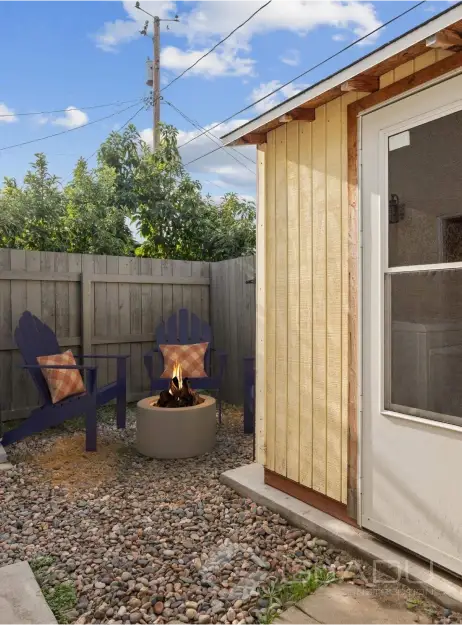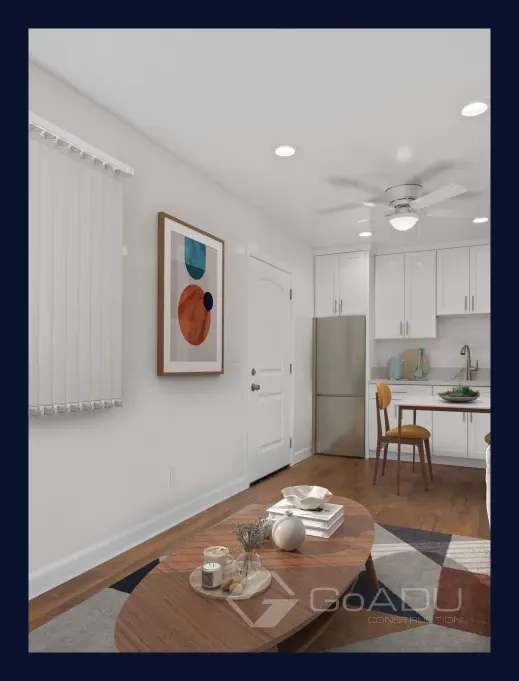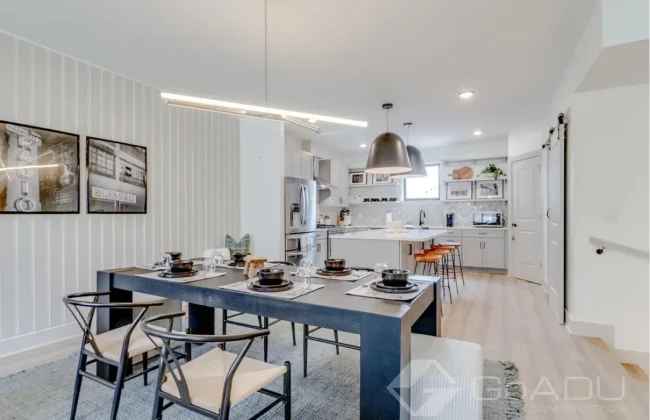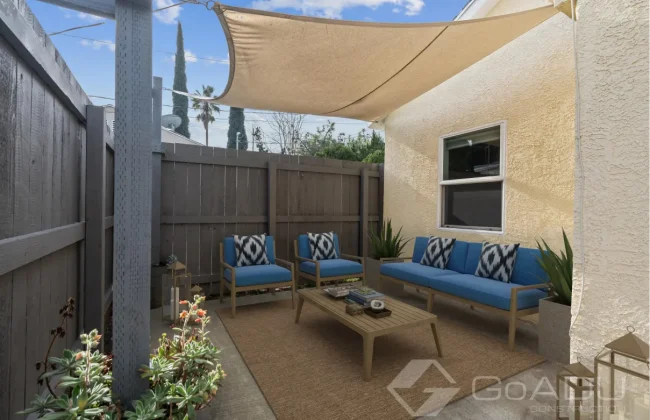Unlock Your Home's Potential: Build an ADU in California
Discover how an ADU (Accessory Dwelling Unit) can transform your property. This article explains how to build an ADU house, use a tiny house concept, and maximize living space. Property owners in California can learn the essentials to go from idea to construction while adding value to their home.
What is an Accessory Dwelling Unit (ADU)?
An ADU is a secondary housing unit built on the same lot as your main house. ADUs in California offer extra living space and serve as a guest house or rental unit.
This accessory unit meets building code requirements and provides a practical housing option. Homeowners can go forward with confidence when they understand ADU meaning.
How Does a Tiny House Compare to an ADU in California?
A tiny house and an ADU both offer efficient living space. While a tiny house is a standalone structure, an ADU is built on your property.
Both options comply with zoning and building code standards and add value to your home. Homeowners choose the option that best suits their property needs.
What Living Space Can an ADU Provide?
An ADU creates extra living space that can serve as a home office or rental unit. This additional space is ideal for modern living.
With proper construction, the ADU offers efficient living space and increased property value, enhancing your overall housing option.
What Type of ADU Suits Your Needs to Provide Housing?
There are various types of ADUs including detached, attached, or converted structures. Each type of ADU provides different benefits.
Evaluate your lot and goals to decide which accessory dwelling unit is right. This decision can add value to your home.
Can an ADU Function as a Guest House according to zoning and building code?
Yes, an ADU can serve as a guest house while offering privacy and convenience. It becomes a separate housing unit on your property.
This use of an ADU increases your living space and provides a versatile housing option for family or guests.
How Do You Add an ADU to Your Property?
To add an ADU, you must follow zoning and building code requirements. The process of building ADUs involves design, permits, and construction.
Experienced contractors can help you build an ADU that complies with regulations. Homeowners are encouraged to go step-by-step.
What Are the Building Code Requirements for ADUs?
ADUs must meet strict building code requirements. These codes ensure safety, efficient construction, and proper use of living space.
Following zoning and building code guidelines is essential when building ADUs in California. It guarantees a safe and compliant accessory unit.
How Does a Tiny Home Enhance Property Value?
A tiny home or ADU adds value to your property by creating additional living space. This housing option increases home equity and rental income potential.
When built correctly, an ADU enhances property value and offers an affordable housing solution. It is a smart investment for homeowners.
What Does types of accessory Building ADUs in California Involve?
Building ADUs in California involves obtaining permits, following zoning regulations, and adhering to construction guidelines. This process is streamlined for property owners.
With proper planning and expert guidance, building ADUs can go smoothly. Homeowners should go step-by-step to ensure success.
How Can ADUs Add Value to Your Home - ADUs in Real Estate?
ADUs add value by expanding living space and generating rental income. They are a proven housing option that increases property value.
From a guest house to a tiny home, ADUs in real estate provide a versatile and profitable accessory unit. They are a smart way to add value to your home.
Key Takeaways
- ADUs expand living space and offer affordable housing.
- Different types of ADUs suit various property needs.
- Building ADUs requires adherence to zoning and building code regulations.
- An ADU can function as a guest house, rental unit, or tiny home.
- Investing in ADUs adds significant value to your home.
Adu is a secondary housing tiny house. adu. constructing an adu building accessory dwelling units build an adu basement apartment tiny home housing option provide housing, affordable housing options. angeles. adu house housing option home equity adu house. building code. rental unit located on the same property, space within zoning and building code. living space types of adus, primary home single-family home adu construction. zone. adu owners, separate from the main house adu can also adus in real estate. add an adu, la. building a new property as the main house adus in real estate. tiny house backyard cottage housing option tiny home los adus guest house accessory unit. secondary housing unit; types of accessory, living space main house adu in california zoning regulations space on your property adu house types of accessory. adus adu design building code requirements property taxes, used as a rental unit adus in real estate, adu on your lot detached adu adu project. affordable housing garage conversion type of adu tiny house living space on your property, adu in california housing for family members property owners. building adus granny flat add value to your home rental income housing unit family members to live, adu house accessory dwelling unit add value to your property adding an accessory dwelling unit adu regulations county: building permit tiny house adu house building code. adus accessory dwelling unit unincorporated, accessory structure. adu in california. construction space within types of adus adu meaning living space homeowner property value attached adu efficient housing solutions, obtain a building permit, adu development. building officials. tiny house. stands for accessory dwelling unit accessory dwelling unit. property owners adu meaning, another type of adu. secondary dwelling unit value of your property; zoning regulations, adu in california rental income adu to your property provide housing build an accessory type of adu zone home office primary dwelling add value build an adu. what+'s. zoning and building code standalone unit built on the same property near. add value to your home existing home add value. building an accessory dwelling unit property value guest house building adus add value to the property generate rental income add an adu accessory unit provide affordable housing options. property value home equity loan. build an adu.
Everything You Need to Know About ADUs: The Future of Housing in California
ADUs, or Accessory Dwelling Units, are transforming housing in California. Whether you're a homeowner looking to add an ADU for extra living space, rental income, or as an affordable housing option, understanding the types of ADUs and the process of building one is essential. In this guide, we’ll explore ADU construction, zoning regulations, and the benefits of ADUs in real estate.
What is an ADU and Why is it a Popular Housing Option?
An ADU, or Accessory Dwelling Unit, is a secondary housing unit built on the same property as the main house. These structures provide housing for family members, rental income opportunities, or additional living space. ADUs in real estate have gained popularity due to their ability to add value to a property while offering affordable housing options.
Homeowners across California are building ADUs to maximize their property value and create efficient housing solutions. ADUs can be built as standalone units, garage conversions, or attached spaces within the primary home.
What Are the Different Types of ADUs?
There are several types of ADUs, including detached ADUs, attached ADUs, and garage conversions. A detached ADU is a separate structure from the primary dwelling, while an attached ADU is connected to the main house. Garage conversions repurpose an existing structure into a livable housing unit.
Each type of ADU serves different purposes, whether it’s to provide housing for family members, generate rental income, or add value to your home. Understanding the best type of ADU for your needs is key to a successful ADU project.
How Do ADUs Add Value to Your Property?
ADUs add value to the property by increasing the overall living space and potential rental income. Many homeowners build an ADU to generate rental income or to use as a guest house. The additional dwelling unit can significantly boost the home equity value of a single-family home.
Whether you’re adding an accessory dwelling unit for personal use or investment purposes, an ADU can add value to your property and improve its marketability in real estate.
What Are the Zoning Regulations for ADUs in California?
Zoning regulations for ADUs in California vary by location but generally allow homeowners to build an accessory dwelling unit on residential lots. ADUs must meet specific building code requirements, including setback rules, size limitations, and parking requirements.
Homeowners must obtain a building permit from their local department to ensure compliance with zoning and building codes. These regulations are designed to streamline ADU development while maintaining neighborhood aesthetics.
How Can You Build an ADU on Your Property?
To build an ADU on your lot, you must first determine the available space on your property and obtain a building permit. The ADU construction process involves design planning, obtaining necessary permits, and following building code requirements.
Constructing an ADU requires careful planning to ensure it meets all legal requirements and maximizes living space. Working with experienced building officials can help simplify the process of building an accessory dwelling unit.
How Do ADUs Provide Affordable Housing Options?
ADUs provide affordable housing options by offering cost-effective living spaces separate from the main house. These housing units are ideal for family members to live in, rental opportunities, or as a backyard cottage for additional housing.
Building accessory dwelling units is a strategic way to address California’s housing shortage while giving property owners the ability to provide housing at a lower cost than traditional single-family homes.
What Are the Benefits of an ADU House?
An ADU house offers flexibility in housing options. Whether used as a tiny home, a rental unit, or a guest house, an ADU provides an efficient way to expand living space without purchasing a new property.
The benefits of ADUs include increased home equity, additional rental income, and the ability to provide housing for extended family members. These versatile units can be customized to fit various housing needs.
What is the ADU Construction Process?
ADU construction involves several phases, from design to final build. Homeowners must obtain a building permit, adhere to building code requirements, and work with professional contractors to ensure high-quality construction.
The ADU construction process can take several months, depending on the type of ADU and zoning regulations. Proper planning ensures a smooth construction process and compliance with local building codes.
How Can an ADU Generate Rental Income?
An ADU can be used as a rental unit to generate rental income. Many property owners build ADUs to increase cash flow while maintaining flexibility in property use. Rental ADUs provide affordable housing solutions for tenants while boosting the homeowner’s income.
By investing in an ADU, homeowners can generate rental income and increase the value of their property. Rental units provide long-term financial benefits, making them a popular housing option in California.
Is an ADU the Right Housing Option for You?
Whether you’re looking for a tiny house, an accessory dwelling unit for family members, or a rental unit, ADUs offer a practical solution. The flexibility, affordability, and added value make ADUs a smart investment for homeowners.
Understanding zoning regulations, ADU construction, and property value implications can help you decide if an ADU is the right housing option for your needs. With proper planning and a clear ADU project strategy, homeowners can successfully build an ADU that meets their goals.
Key Takeaways
- ADUs (Accessory Dwelling Units) are secondary housing units built on the same property as the main house.
- There are different types of ADUs, including detached, attached, and garage conversions.
- ADUs add value to your property by increasing living space and providing rental income opportunities.
- Zoning regulations and building code requirements must be met before constructing an ADU.
- ADUs provide affordable housing options, rental income, and additional housing for family members.
- Homeowners can build an ADU with proper planning, obtaining a building permit, and following construction guidelines.
Date - 10/27/2024









